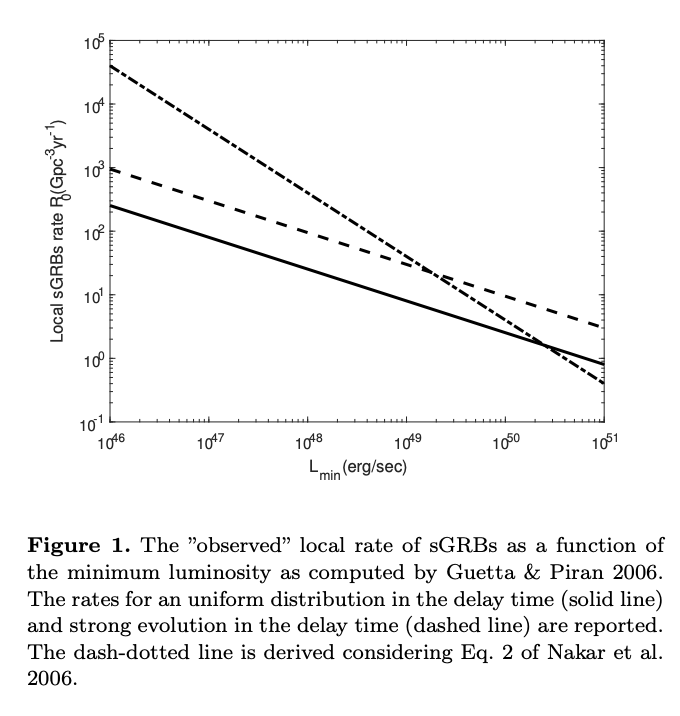Padova-Asiago Supernova Group
Highlights
GW170817: implications for the local kilonova rate and for surveys from ground-based facilities
Della Valle, M. 2018, MNRAS 481, 4355 (link to pdf)
We compute the local rate of events similar to GRB 170817A, which has been recently found to be associated with a kilonova (KN) outburst. Our analysis finds an observed rate of such events of RKN∼352+810−281 Gpc−3yr−1. After comparing at their face values this density of sGRB outbursts with the much higher density of Binary Neutron Star (BNS) mergers of 1540+3200−1220 Gpc−3yr−1, estimated by LIGO-Virgo collaboration, one can conclude, admittedly with large uncertainty that either only a minor fraction of BNS mergers produces sGRB/KN events or the sGRBs associated with BNS mergers are beamed and observable under viewing angles as large as θ ≤ 40∘. Finally we provide preliminary estimates of the number of sGRB/KN events detected by future surveys carried out with present/future ground-based/space facilities, such as LSST, VST, ZTF, SKA and THESEUS. 186
Della Valle, M. 2018, MNRAS 481, 4355 (link to pdf)
We compute the local rate of events similar to GRB 170817A, which has been recently found to be associated with a kilonova (KN) outburst. Our analysis finds an observed rate of such events of RKN∼352+810−281 Gpc−3yr−1. After comparing at their face values this density of sGRB outbursts with the much higher density of Binary Neutron Star (BNS) mergers of 1540+3200−1220 Gpc−3yr−1, estimated by LIGO-Virgo collaboration, one can conclude, admittedly with large uncertainty that either only a minor fraction of BNS mergers produces sGRB/KN events or the sGRBs associated with BNS mergers are beamed and observable under viewing angles as large as θ ≤ 40∘. Finally we provide preliminary estimates of the number of sGRB/KN events detected by future surveys carried out with present/future ground-based/space facilities, such as LSST, VST, ZTF, SKA and THESEUS. 186
